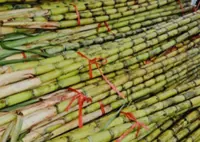Caption: Shark Bay Marine Park, Western Australia, Shell Beach composed of the shells of the cockle species Fragum erugatum. - Brian W. Schaller (FAL 1.3)
IMAGINE the refreshing sea breeze on your face as you take a brief getaway to enjoy the white sandy beaches.
But does a beach composed entirely of shells really exist?
Verdict:
TRUE
Unlike conventional sandy beaches, Shell Beach in Western Australia’s Shark Bay, a Unesco World Heritage Site, is known for its abundant tiny white shells, which were washed ashore over time, creating a gleaming white landscape.
The shell-covered beach has been attracting visitors from far and wide to witness this natural wonder.
The hypersalinity nature of the surrounding environment makes the area a cockle haven, where the invertebrates thrive and die, and have their remains wash up on shore.
Did you know that the shells compressed into a form of limestone, which is great building material, were formerly mined until the area was placed under Unesco protection in 1991?
With special permits, people are still allowed to mine the shells (as a source of calcium) for poultry feed, today.






